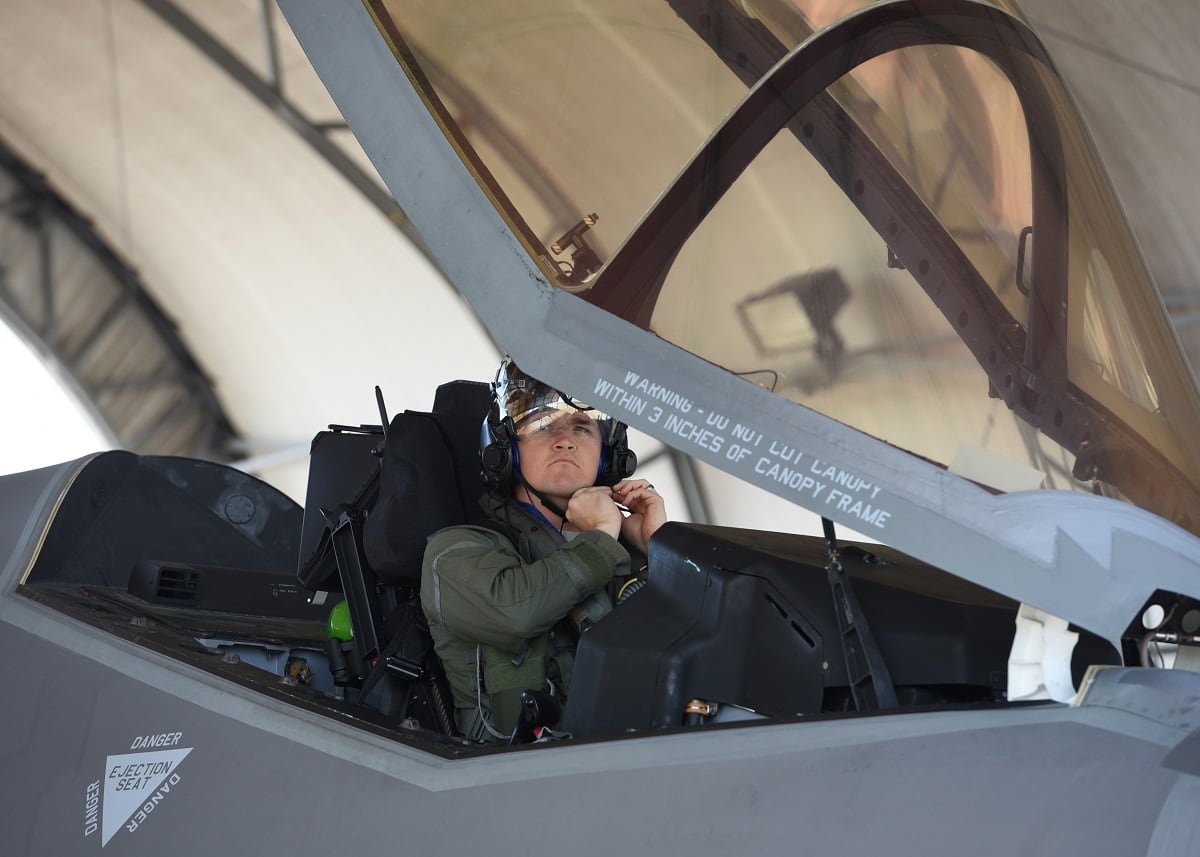FORT WORTH, Texas — A shake-up may be coming for the F-35 supply base, as Lockheed Martin considers opening up new competitions for the jet’s electronic warfare and communications systems.
The goal? To drive down the life-cycle costs of key technologies — especially during operations and sustainment — by forcing defense firms to face off against each other.
“We’re working toward the $80 million target” for a single F-35A model, said Eric Branyan, Lockheed’s vice president for F-35 supply chain management. “To do that, one of the most effective means is to conduct competitions.”
In an June 22 interview at Lockheed Martin Aeronautics headquarters in Fort Worth, Texas, Branyan stressed that the company had not made a firm decision on whether to recompete the electronic warfare system currently provided by BAE Systems or the Northrop Grumman-made communications, navigation and identification, or CNI, system.
However, Lockheed is exploring its options, having sent out a request for information to a handful of defense contractors who specialize in such technologies.
“We’re evaluating right now the RFI responses and determining if it’s a good time to go do a competition and what would that competition entail,” Branyan said. “Sometimes you look at what’s there and it’s not a sea change enough that’s worth the effort to go do the competition. It wouldn’t be enough for a change in cost and performance.
“Also there may be different elements we compete. We may not do the full system, we may do parts of them if there’s something there’s more advantageous to get the technology and cost improvements on. So we’re going through that trade study now.”
In its quest to cut costs on the program, Lockheed has already recompeted several systems, including the aircraft’s memory system and the panoramic cockpit display. Most notably, the company confirmed in June that Raytheon would produce a new version of the distributed aperture system, or DAS, which would save $3 billion over the cost of the program.
RELATED

Lockheed plans to decide whether to recompete the EW and CNI systems by the end of 2018. The Pentagon’s F-35 Joint Program Office would also weigh in, as there could be up-front engineering and development costs that would have to be folded into the budget and the jet’s modernization strategy.
Branyan declined to detail which companies Lockheed had solicited as part of the RFI process, but said that most companies tend to respond because the F-35 business case — which includes 2,456 F-35s for U.S. customers and hundreds more for the international market — guarantees steady, profitable work.
The F-35 is considered to have a formidable electronic warfare capability due to its current EW suite, the AN/ASQ-239, although the Pentagon has revealed few details about how the system allows the F-35 to find and jam enemy radars.
BAE Systems declined to comment on how it could improve the AN/ASQ-239, should a contest move forward.
“Similar to many large programs, Lockheed Martin, the prime contractor on the F-35 Joint Strike Fighter, is evaluating the most affordable approach to integrate new capabilities and reduce life-cycle costs,” BAE said in a statement. “As part of this cost-reduction effort they have issued a request for information to which we have responded.”
Integrating a new electronic warfare system would be the most ambitious of the F-35 recompetes so far. The risk it would pose to the program is not necessarily insignificant, but it could be worth it if it helps Lockheed pare down costs, said Richard Aboulafia, an aerospace analyst with the Teal Group.
“You could also make an argument for improving the plane at this point,” he said. “In terms of its time since entering service, it’s way early for major changes. But in terms of its time since development started, it’s way late for major changes.”
The Raytheon-built DAS — which fuses together imagery from the F-35’s six electro-optical infrared cameras to project a complete picture of the battlefield to the pilot’s helmet — could provide a model on how to quickly develop and integrate advanced tech like a new EW system.
In order to equip the 15th lot of F-35s slated for delivery in 2023, Raytheon will have to sprint to be ready to build at full rate — 150 ship sets per month — by July 2022, Branyan said.
A critical design review for the new DAS is scheduled for April 2019, and from there the company will move quickly through integration, ground tests and flight qualification.
Branyan said he’s not worried that incorporating the Raytheon system could pose undue risk to the program. There’s no fallback option to continue production of Northrop’s DAS, the current model aboard the F-35, but the test plan includes about a year of buffer time in case the system needs additional work.
“All the working parts of it were already flying on other platforms. So it’s a very mature technology. Essentially they’re just repackaging it into the F-35 and integrating it into our interfaces,” he said.
Valerie Insinna is Defense News' air warfare reporter. She previously worked the Navy/congressional beats for Defense Daily, which followed almost three years as a staff writer for National Defense Magazine. Prior to that, she worked as an editorial assistant for the Tokyo Shimbun’s Washington bureau.








